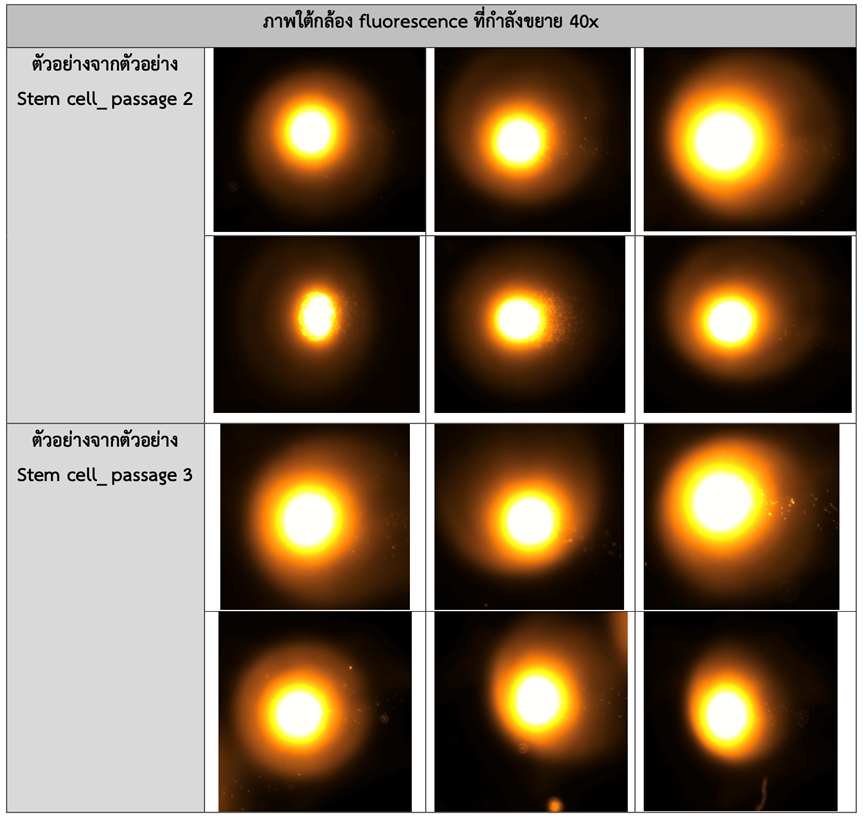
Vega Stem Cell (vegastemcell.com), a regional leader in stem cell innovation and regenerative medicine, has deepened its commitment to international standards by undertaking a new round of advanced quality testing on its stem cell lines in collaboration with the Thailand Institute of Scientific and Technological Research (TISTR). This strategic partnership focuses on core biological quality metrics—cell morphology, cell count, purity (bacteria and fungi), and DNA damage assessment through the Comet Assay.
This initiative highlights Vega’s systematic approach to Quality Assurance (QA) and Quality Control (QC) in its stem cell programs, ensuring every batch meets rigorous safety, purity, and efficacy standards. These testing protocols are vital in qualifying stem cell-based treatments for use in clinical research, personalized therapy, and advanced medical applications across global markets.
Rigorous Testing for Stem Cell Quality Control
Stem cells are powerful biological agents capable of differentiation, regeneration, and immunomodulation. However, their effectiveness in clinical applications depends heavily on critical quality attributes, including morphology, viability, genetic integrity, and absence of contamination.
As part of this testing program with TISTR, Vega Stem Cell’s biological samples are undergoing the following assessments:
- Cell Morphology AnalysisCell morphology is a foundational aspect of stem cell quality assessment. Using phase-contrast microscopy, cells are examined for their shape, structure, and growth patterns. For mesenchymal stem cells (MSCs), a spindle-shaped, fibroblast-like morphology is ideal, indicating high viability and a healthy proliferative profile.
Abnormal morphology can be a sign of senescence, transformation, or contamination. Through routine morphological evaluations, Vega ensures that its stem cells retain their visual and structural integrity across production cycles.
- Cell Count and ViabilityQuantifying the number of viable cells in a given sample is essential for both research and clinical applications. Accurate cell counting allows for standardization across treatments and ensures that patients receive dosages within therapeutic thresholds.
Using standardized cell counting techniques such as trypan blue exclusion and automated counters, TISTR is validating the expansion capacity and yield of Vega’s cultured stem cells. This ensures that every batch produced by Vega can meet both clinical demand and safety requirements.
- Purity Testing for Bacteria and FungiSterility testing is critical in preventing post-treatment infections or immune reactions. Contamination by bacteria or fungi can compromise patient safety and the efficacy of stem cell therapy. Vega’s QA system mandates batch-level sterility testing, using culture-based and molecular assays that comply with international standards.
TISTR’s microbial screening ensures that each cell lot is free from bacterial and fungal contaminants. This reinforces Vega’s commitment to manufacturing pharmaceutical-grade stem cell products suitable for use in high-standard medical environments.
- DNA Damage Detection via Comet AssayThe Comet Assay, also known as single-cell gel electrophoresis, is a powerful method for detecting DNA strand breaks at the single-cell level. This test is crucial for assessing the genotoxic effects of environmental stress or prolonged culturing on stem cells.
Cells with excessive DNA damage may carry risks of mutation, reduced therapeutic potency, or oncogenic potential. By integrating Comet Assay results into its QC pipeline, Vega actively monitors the genomic stability of its cultured MSCs, ensuring they remain safe and effective for clinical use.
Vega Stem Cell’s Commitment to Global Standards
Vega Stem Cell continues to position itself at the forefront of stem cell research and application through a strong foundation in international QA and QC protocols. The collaboration with TISTR enables third-party verification of Vega’s procedures and reinforces trust with patients, clinicians, and regulatory bodies worldwide.
This comprehensive quality assessment complements Vega’s use of GMP-compatible reagents validated cryopreservation techniques, and documentation systems that support traceability and batch control. Each step—from cell isolation to final delivery—is governed by strict quality assurance practices aligned with PIC/S GMP and ISO standards.
Applications of High-Quality Stem Cells
The importance of stringent quality control lies in its direct impact on the success of cell therapy. Vega’s stem cells are used or under evaluation for a range of clinical and therapeutic applications, including:
– Orthopedics: Cartilage regeneration, ligament repair, and spinal interventions
– Aesthetic Medicine: Skin rejuvenation, hair growth stimulation, and scar treatment
– Dentistry: Periodontal regeneration, bone graft enhancement, and oral soft tissue repair
– Immunomodulation: Treatment of autoimmune and inflammatory disorders
– Research: Development of gene-modified stem cells for oncology and neurodegenerative diseases
Each application requires consistent cell quality and genetic stability, both of which are safeguarded by rigorous testing and monitoring practices.
Thailand as a Hub for Advanced Cell-Based Therapies
Thailand’s biomedical sector is rapidly emerging as a center of excellence in regenerative medicine. Institutions like TISTR provide the necessary scientific rigor and infrastructure to elevate local biotech innovation to international standards. Vega’s ongoing collaboration with TISTR is a prime example of how public and private sectors can work together to ensure quality-driven growth in stem cell therapeutics.
By engaging TISTR to validate key parameters like morphology, cell count, purity, and DNA stability, Vega reinforces its role as a responsible, innovation-led company dedicated to excellence in healthcare.
The Future of Regenerative Medicine Is Quality-Driven
As the field of regenerative medicine evolves, stakeholders increasingly recognize that therapeutic success begins with stringent quality control. Stem cell therapies that meet international standards in identity, purity, and genetic safety are more likely to gain regulatory approval, attract global partnerships, and deliver meaningful outcomes for patients.
Vega’s quality strategy is not an afterthought—it is the backbone of its operational model. From laboratory research to therapeutic deployment, each decision is guided by a commitment to safety, transparency, and measurable excellence.
By incorporating advanced tests such as the Comet Assay and leveraging expertise from established scientific bodies like TISTR, Vega raises the bar for what responsible stem cell innovation should look like in the 21st century.
Contact Information
Vega Medical Services
3/6, The Primary 101, Soi Lad Phrao 101
Lad Phrao Road, Khlong Chan
Bang Kapi District, Bangkok 10240
Thailand
Email: vegastemcell@gmail.com
Tel & WhatsApp: +66 (0) 86 691 6915
Website: www.vegastemcell.com

